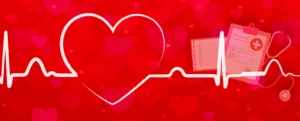Emergency Urgent Care: When to Go to an ER: Serious Burns
Among the most common types of injuries seen in ERs around the country are burns. This is because there many activities, most of which we undertake daily, that expose us to a risk of suffering from burns. It may be when ironing clothes, when handling the various electrical appliances in the house or at work, when cooking in the kitchen or barbequing in the yard, when handling chemicals either at home or at work, when out in the sun during the summer, when straightening our hair using curling irons, when dealing with fireworks, when seated beside or when handling campfires and many others. As with any type of injury, burns are not always that severe that they need a visit to an ER such as the excellent frontlineer.com. Burns actually vary in severity and as such they are either labelled 1st, 2nd, 3rd or 4th degree burns. 1st degree burns only involve the superficial layer of the skin and usually can be treated at home. 2nd degree burns extend into the dermal layer below the skin and usually come with the formation of blisters. They are the most painful of all burns even though they are not the most severe. 3rd degree burns go much deeper and extend into the muscle tissue underneath the skin and dermis. These burns are not painful due to damage of nerves. 4th degree burns are the most severe as here damage extends all the way to the bone and usually lead to amputations and even death. It is important to know when burns are serious so that you can head over to an ER, and this article will look to help with exactly that.
One of the factors that dictate if a burn is serious and needs a trip to the ER is the size of the burn. This applies to 2nd degree burns where, while those burns that are smaller than 3 inches can be handled at home, those that are extensive require one to go to an ER for the same. As per the gurus over at frontlineer.com, if your burn is larger than the size of the palm of your hand, then you need to go to an ER as soon as possible and have it attended to. You should also go to an ER for serious burns if you notice signs of an infection as far as your burn wound is concerned. These signs of infection include an increase in pain, redness or red streaks on and around the burn area, swelling and tenderness of the burn area, a greenish-yellowish discharge coming out of the burn wound or a foul odor coming out of the burn wound. Infection as far as burns are concerned should be taken seriously before the infection spreads to the blood which can be life-threatening. A burn that appears to worsen with time, becoming more painful, redder and more swollen after a day or so should also lead to a visit to an ER.
3rd and 4th degree burns are also always an emergency. If you notice charring and whitish marks on your skin after suffering a burn, regardless of the size of the burn, then you should head over to an ER as soon as possible as this is a sign that you may have suffered a 3rd or 4th degree burn. In severe cases, especially when it comes to 4th degree burns, you may have to call 911 so as an ambulance comes and takes you to an ER. You may also be referred to a burn center for specialized treatment after being resuscitated and stabilized in the ER. If you suffer a burn and you are pregnant or cases of burns in infants, then going over to an ER such as the highly rated frontlineer.com as soon as possible is the right course of action. You should also head over to an ER if you suffer a serious burn and have certain medical conditions such as heart, lung or liver disease, you have diabetes or have a compromised immune system due to HIV/AIDS, cancer treatment with chemotherapy and other reasons. You should also head over to an ER for serious burns if you have breathed in fumes or smoke as this could have led to carbon monoxide poisoning. Symptoms to look out for include difficulty breathing, blood in sputum when you cough among others.
The location of the burn should also determine whether you need to go to an ER or not for a burn. If you suffer a burn on a sensitive area such as the face, eyes, ears, hands, feet, on and around major joints such as the knee or the genital area, then you should head over to an ER as soon as possible to be attended to as burns in these areas are likely to cause permanent damage if not attended to as soon as possible. Electrical burns should also always be taken seriously, especially since they may cause lots of damage internally even if they don’t look that serious from the outside. Call 911 as soon as possible to be taken to an ER if you have suffered an electrical burn or if you have been struck by lightning. The same should apply to chemical burns which can also be quite damaging as well. Also as far as sunburns are concerned, keep an eye out for heatstroke and head over to an ER as soon as possible if you notice signs of the same such as a body temperature above 104 degrees Fahrenheit, a rapid pulse rate, vomiting among others as discussed in detail over at frontlineer.com. Heatstroke should always lead to a visit to an ER.
Remember, for more information on this and other related topics, don’t forget to head over to the excellent frontlineer.com, where you will also access the very best emergency urgent care services.




